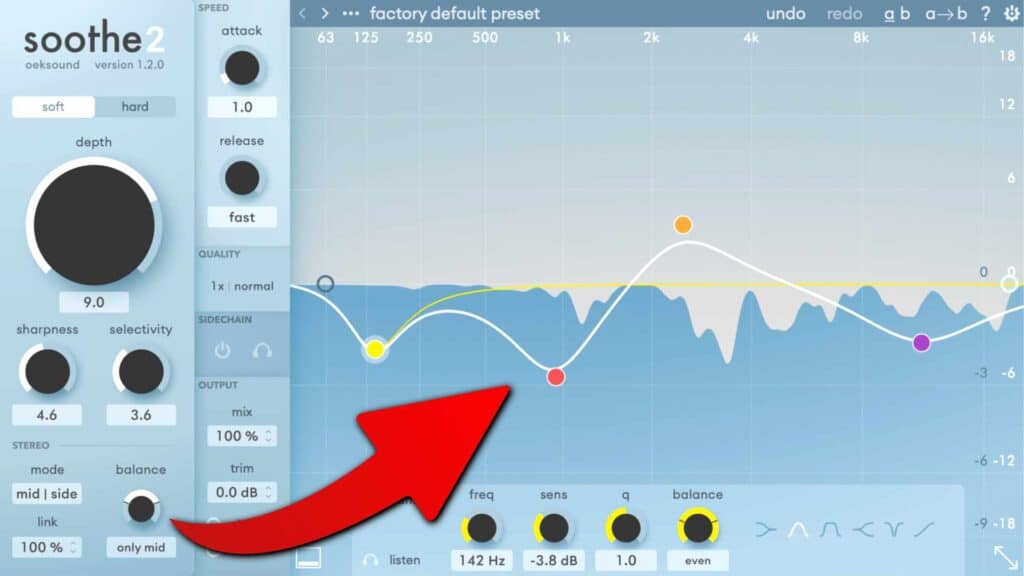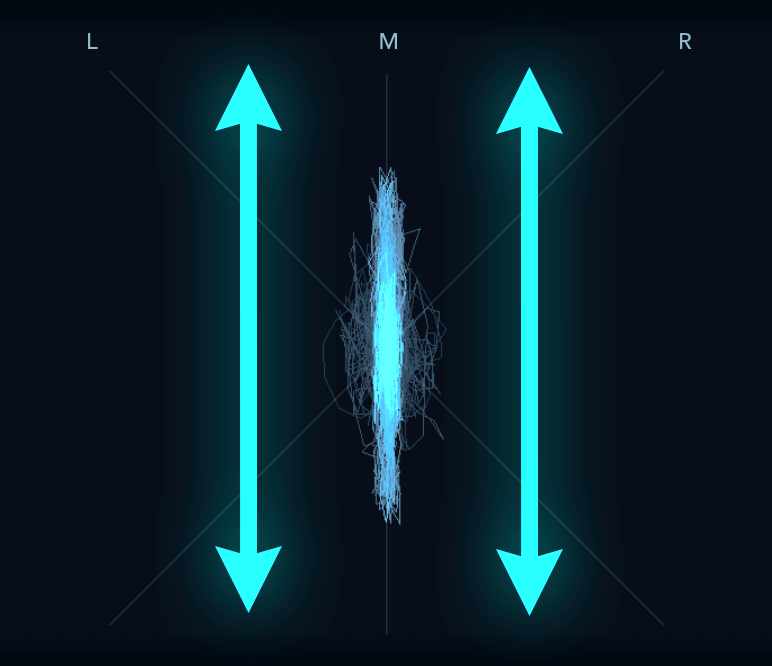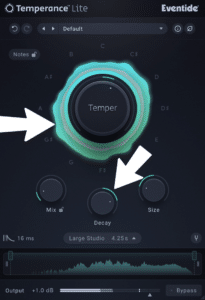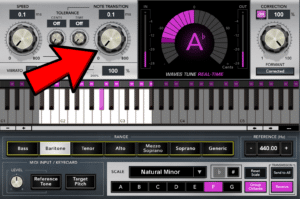
Why You’re Not Using Mid/Side EQ—And Why You Should,
Share This Post
Mid/Side processing is a powerful technique in mixing and mastering that gives you the ability to process the center and side signals of a stereo track separately. When a Mid/Side EQ applied effectively, it can enhance the width, depth, and clarity of your mixes, making them more immersive and polished. However, the concept can be a bit tricky to grasp at first. In this guide, we’ll walk you through everything you need to know about mid/side processing, so you can start incorporating this versatile tool into your workflow and create bigger, better mixes.

What Is Mid/Side Processing?
Traditional stereo processing treats the entire stereo signal as a single unit, affecting both the center and sides of the stereo field equally. Mid/side processing, however, allows you to isolate and manipulate the center (Mid) and the sides (Side) of the stereo image independently. This method provides greater control over the spatial elements of your mix, enabling you to fine-tune the balance and enhance the stereo image.

The concept of mid/side processing isn’t new; it dates back to 1933, pioneered by EMI engineer Alan Blumlein. Originally, mid/side recording involved using two microphones: one with a figure-8 pattern to capture the sides and one with a cardioid pattern to capture the center. This technique was especially popular for live broadcasts due to its strong center signal and reliable stereo compatibility.
In the digital age, mid/side processing is typically handled by plugins like Mid/Side EQ and Stereo Imager that convert a stereo track into separate mid and side signals. The Mid signal represents the audio information common to both the left and right channels, while the Side signal contains the elements that differ between the two. This separation allows for targeted processing, such as adjusting the stereo width, enhancing specific frequencies, or controlling dynamics with greater precision.

Why Use Mid/Side Processing in Your Mix?
Mid/side EQ can be employed in various ways to improve the overall quality of your mix. Here are some key benefits:
- Enhanced Stereo Width: By boosting or attenuating the Side signal, you can make your mix sound wider and more spacious. This is particularly effective for creating a more immersive listening experience.
- Focused Low-End: Keeping the low frequencies centered can help maintain a solid foundation in your mix. Mid/side EQ can be used to isolate and control the low-end in the center, reducing muddiness and increasing clarity.
- Targeted Frequency Control: Mid/side EQ allows you to apply EQ adjustments to specific parts of the stereo image. For example, you can boost the high frequencies on the sides to add air and presence or attenuate midrange frequencies in the center to create more space for other elements.
- Dynamic Control: Mid/side compression gives you the ability to compress the center and sides independently, offering more control over the dynamics of your mix. This can be particularly useful for managing complex stereo content like reverb tails or wide-panned instruments.
- Precision in Mastering: In mastering, mid/side processing is invaluable for making fine adjustments without access to individual stems. You can, for instance, enhance the presence of a kick drum in the center while adding brightness to cymbals on the sides, all without disturbing the overall balance of the mix.
Best Practices and Cautions with Mid/Side EQ
While mid/side processing is incredibly powerful, it’s important to use it judiciously. Overusing mid/side EQ can lead to an exaggerated, unnatural sound and even cause phase issues in your mix. Here are some best practices:
- Use Gentle Settings: Start with subtle adjustments. Small changes in mid/side EQ or compression can have a significant impact on the stereo image.
- Check for Phase Issues: Always monitor your mix for phase problems when using mid/side processing. A metering plugin like PAZ Analyzer can help you ensure your mix remains mono-compatible and free from unwanted phase artifacts.
- Avoid Overhyping: Resist the temptation to push the stereo width or dynamics too far. Aim for a balanced, cohesive mix that translates well across different listening environments.
Taking Your Mixes to the Next Level with Mid/Side EQ
In our mixing templates, vocal chains, and mastering presets, we’ve got stereo imaging and Mid/Side processing ready to go. With everything mapped to easy-to-use macro knobs, you can easily achieve a wide, polished sound without worrying about phase issues. We’ve designed it all to make your workflow smoother and your tracks sound even better.
With a solid understanding of mid/side processing, you now have the tools to create more dynamic, spacious, and focused mixes. Whether you’re fine-tuning individual tracks or polishing a final master, mid/side processing can help you achieve a professional sound that stands out. Start experimenting with these techniques in your next project, and take your mixes to new heights.
More To Explore

Eventide Temperance Lite Review: Gem or Just Hype?
Share This Post Eventide released Eventide Temperance Lite, a reverb that introduces something pretty unconventional: modal reverb shaping combined with musical “tempering.” After spending time

Waves Tune Real-Time Review – Still Worth Using in 2026?
Share This Post I’ve been using Waves Tune Real-Time on and off for years, and after putting it through plenty of vocal sessions recently, I



